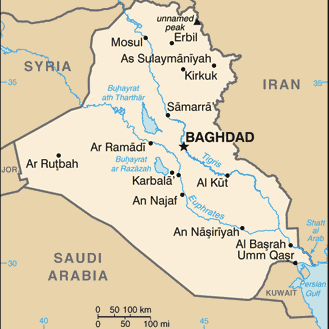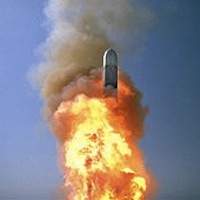Recently, the New York Times dropped a bombshell article that began thus:
The United States has discovered nearly $1 trillion in untapped mineral deposits in Afghanistan, far beyond any previously known reserves and enough to fundamentally alter the Afghan economy and perhaps the Afghan war itself, according to senior American government officials.
The previously unknown deposits — including huge veins of iron, copper, cobalt, gold and critical industrial metals like lithium — are so big and include so many minerals that are essential to modern industry that Afghanistan could eventually be transformed into one of the most important mining centers in the world, the United States officials believe.
An internal Pentagon memo, for example, states that Afghanistan could become the “Saudi Arabia of lithium,” a key raw material in the manufacture of batteries for laptops and BlackBerrys.
The huge caveat in the story is that Afghanistan has no heavy mining industry right now and probably wouldn’t be able to extract and process these resources in a cost-effective manner for at least a decade. Almost inarguably, this story is a game-changer in Afghanistan. The overarching question, is how will it actually change the “game,” and whether for good or ill.
For more on the growing economic importance of lithium carbonate, read this post that was co-incidentally published earlier the same time the article came out.
Is the report accurate and presented fairly (and does that matter)?
First things first. Is this report even accurate or is it overblown American military propaganda being presented as news? Probably closer to the latter, despite the prestige of the Times journalist who reported the story (who resisted allegations he’d been played). Brooklynbad, who had written the post on lithium I linked above, examined what a bunch of other bloggers and analysts were saying:
Marc Armbinder at The Atlantic:
The way in which the story was presented — with on-the-record quotations from the Commander in Chief of CENTCOM, no less — and the weird promotion of a Deputy Assistant Secretary of Defense to Undersecretary of Defense suggest a broad and deliberate information operation designed to influence public opinion on the course of the war.
As was pointed out on the front page yesterday, the idea that there was vast mineral wealth in Afghanistan was known by the government for years. The article was presented, however, as if the United States struck “gold in them thar hills.” Kate Drummond at Wired:
But the military (and observers of the military) have known about Afghanistan’s mineral riches for years. The U.S. Geological Survey and the Navy concluded in a 2007 report that “Afghanistan has significant amounts of undiscovered nonfuel mineral resources,” including ”large quantities of accessible iron and copper [and] abundant deposits of colored stones and gemstones, including emerald, ruby [and] sapphire.”
Not to mention that the $1 trillion figure is — at best — a guesstimate. None of the earlier U.S military reports on Afghan’s mineral riches cite that amount.
Keep in mind that the article in question cites the proverbial “internal Pentagon memo” skillfully obtained, apparently. Generals and civilian officials from the Pentagon are willing to be quoted about the memo, with Petraeus saying, “There is stunning potential here.”
Ambinder’s piece, quoted briefly in that post, is probably worth reading in full to see why this is, as he puts it, an accurate story but not new information in any way that really changes the situation. However, he is making the point that this article was possibly being set up by the Pentagon and possibly the Obama Administration as part of a public opinion/information campaign.
Brooklynbad added the next day after reading the journalist’s defense of his article:
So, in summary, a Pentagon official sends a team of CIA guys to Afghanistan to come up with a valuation of the country’s wealth. They come back with $900 billion. A member of the team contacts a New York Times reporter to “tell him what they were finding.” Apparently, they thought the reporter was extremely interested in Afghan geology, although he has no history of such writing. Next, the reporter interviews all the people who contacted him. [And then writes the article saying this could “fundamentally alter … the Afghan war itself” …] Access at work. Why would any pajama-wearing blogger question that?
But, although the facts are theoretically believed to be accurate, if presented in a very misleading/propagandistic manner… that may not be relevant. In politics, war, and economics, perception is often what matters most. This article, if part of a larger information campaign and media blitz, does matter, even if it’s spin, because it affects perceptions of reality here and abroad — at least in the short-term, until people decide again that it’s probably unrealistic to expect much to come of these resources.
This is a powerful “news” story that shapes the narrative and even the facts on the ground. With that in mind, I’ve finally got around to analyzing what it means in this post. I had a brief discussion with a reader from Pakistan who generally shared my deeply pessimistic view of the news.
How does it affect Afghanistan?
Afghanistan doesn’t just lack a strong mining ministry, it lacks a strong anything in the central government. It government is a kleptocracy that is unable to extend its control outside the capital and a couple of regions and has unclear loyalties at this point (at best). Semi-stable regions with barely-functioning governments and significant natural resources are a magnet for transnational corporations that can afford to provide security for their operations. From the United States and Europe, that’s usually in the form of private military contractors as seen in South America and sub-Saharan Africa, but if China becomes interested it would probably copy its Sudan model and bring in People’s Liberation Army troops to protect its state-owned extraction operations. There’s going to be an incentive from profiteers to keep Afghanistan only somewhat stable — safe enough to operate with outside security, but not stable enough to collect revenues. The areas these resources were “discovered” is primarily in what is now Taliban-held zones.
For the Taliban, this is potentially great news. If they are willing to partner with outside companies/states, they could cut deals to take some of the profits in exchange for restraining local instability while continuing its war against the central government. Right now, they have basically been doing this for opium crops in many areas, taking what they had once banned and making it a very profitable cash crop to finance their operations. Clearly, moral qualms got thrown out the window at some point, since international money streams talk. If they think they could exploit this, whether or not they succeed, they will do their best to try. Even if they fail, it will increase national violence in the medium-term, if they try to seize and exploit the deposits.
(Added @ 10:31 PM) Afghanistan’s government certainly can’t develop this any time soon:
Moreover, before we get too excited about lithium and rare-earth metals and all that, Afghanistan could probably use some help with a much simpler resource: cement.
According to an article in the journal Industrial Minerals, “Afghanistan has the lowest cement production in the world at 2kg per capita; in neighbouring Pakistan it is 92kg per capita and in the UK it is 200kg per capita.” Afghanistan’s cement plants were built by a Czech company in the 1950s, and nobody’s invested in them since the 1970s. Most of Afghanistan’s cement is imported today, mainly from Pakistan and Iran. Apparently the mining ministry has been working to set up four new plants, but they are only expected to meet about half the country’s cement needs.
Why do I mention this? One of the smartest uses of development resources is also one of the simplest: building concrete floors. Last year, a team of Berkeley researchers found that “replacing dirt floors with cement appears to be at least as effective for health as nutritional supplements and as helpful for brain development as early childhood development programs.” And guess what concrete’s made of? Hint: it’s not lithium.
So, for the average Afghan civilian, this is just more bad news, not a much-needed development. As my reader put it, “this is just laying out the welcome mat” both for further Western presence and for a regional metals-mineral rush, as well as for ethnic clashes among the different Afghan (and Pakistani) populations of the various areas where these deposits are located. An alternative scenario from the Taliban grab presented above would be for the various minority ethnicities to fight over little pockets of metals and minerals near their traditional fiefdoms.
How does it affect the general region?
For Pakistan, this probably translates to more conflict and upheaval as well. There are a number of scenarios that would pretty much result in that outcome. India, which has an interest in acquiring lithium for batteries and other modern technological production, has tried to develop Afghanistan into a part of its sphere of influence for years to harass Pakistan and divide Pakistan’s military so as to prepare for an attack from both directions — or so the hardliner/conspiracy theorists in Pakistan claim. India could potentially try to get in on this. China might as well, given its investments in copper mining in Afghanistan, but it might be less interested than the United States expects.
Pakistan’s intelligence services has had close ties to the Afghan Taliban since they created them as a counterbalance to foreign influences there. It seems likely that Pakistani intelligence operatives would rush to take advantage of the situation if the Taliban makes a bid for control of the mineral deposits. In any case, a less stable Afghanistan and a longer war (if this delays an American exit) means continued spillover conflict in Pakistan and further American air attacks inside Pakistan as part of purported counterterrorism operations. It also seems likely that any interested corporations would try to use Pakistan as a connector to the outside world, including for bringing in supplies, until the hypothetical time when Afghanistan is developed enough to link back more to the capital than to Pakistan in the eastern areas where the deposits are concentrated.
How does it affect the United States?
Rosy scenario: Afghanistan, with continued United States funding and limited military assistance over then next fifteen years, develops a mining industry in a secure environment that provides the central government with a steady supply of revenue, enabling it to pay for its own security eventually, and then it becomes a stable democracy and a role model for the region — none of which was likely before this discovery and with US withdrawal — and therefore we must stay longer now.
More realistic scenario: The United States pro-war camp attempts to pressure everyone into signing onto an indefinite extension of the war, because suddenly it’s supposedly winnable and it will be our fault if we leave now, just when we could have turned things around and paid for the war magically with resources that don’t belong to us… and after all that, whether or not we stay, Afghanistan will fail to develop the resources anywhere near as early as hoped, if at all.
But there’s definitely going to be a lot of pressure in Washington now to use this report as justification to stay. Does it really change that this war is a lost cause for the United States (in my opinion)? No, I don’t believe it does. Nor do I cynically believe that the United States went into Afghanistan in the first place knowing we could get minerals and metals — that’s idiotic, since we didn’t know much of anything about Afghanistan until we went in, and we only went in because Bush couldn’t work out how to justify invading Iraq first after 9/11, which was his preference. BUT, it’s hard not to be cynical on the timing of the report, since the United States has not actually begun withdrawal and is at a point where gains that should have materialized by now from the second surge have failed to do so.
This brings me to my last area of analysis, which is also related to what affect this report will have on the United States.
Do we have a past parallel to this situation?
There’s a bit of a deja vu here, which is perhaps a bit of a good thing, as well as a bad thing. I didn’t discover this myself (I saw it first on The Daily Show), but I looked it up to confirm. In the final years of the Vietnam War, an oil company was given exploratory rights to look for oil off the coast of ‘Nam. In the early 1970s, just as the United States was theoretically trying to pull out, the American news media exploded with reports that there were vast underwater oil fields in South Vietnam’s territorial waters, which continued periodically until North Vietnam overran the South a few years later, at which point it was moot for the United States.
It seems like a pretty big coincidence that just as the Vietnam War, which was for years our longest war, was possibly going to be wrapped up, there was a “discovery” of lots of oil, which meant we couldn’t let South Vietnam fall to the Communists! Or in these very credible words in the New York Times in March 1971:
Secretary of State William P. Rogers said today that reports of large oil deposits off the shore of South Vietnam “have absolutely no effect on United States policy.”
Of course not.
And it’s a pretty gigantic coincidence that just as the War in Afghanistan surpassed the Vietnam War’s length in US involvement of ground troops with a year to go before the pullout is scheduled to begin, the Pentagon and Afghan government suddenly tell the New York Times that there’s a massive mineral deposit in one of the most at-risk zones in the country. As with the Vietnam oil sites, we knew about the Afghan deposits for at least a few years before somebody decided to hype them to the media. Even more conveniently, they tell us that the deposits are worth at least $1 trillion, which happens to be exactly the same amount that the war has now cost the United States, as of a few weeks ago.
On the good side, if Vietnam is any example, this “discovery” won’t really do much to keep us from leaving Afghanistan eventually. But it seems likely to drag it out to an even bitterer end. We can only hope not.
This piece was originally published at Starboard Broadside.
 New York Times headline today: “Qaeda-Linked Militants in Iraq Secure Nearly Full Control of Falluja”
New York Times headline today: “Qaeda-Linked Militants in Iraq Secure Nearly Full Control of Falluja”


 South Sudan is Africa’s newest country and is a significant oil-producer (
South Sudan is Africa’s newest country and is a significant oil-producer ( I agree with that. There are international norms and laws against using chemical weapons, but unfortunately
I agree with that. There are international norms and laws against using chemical weapons, but unfortunately